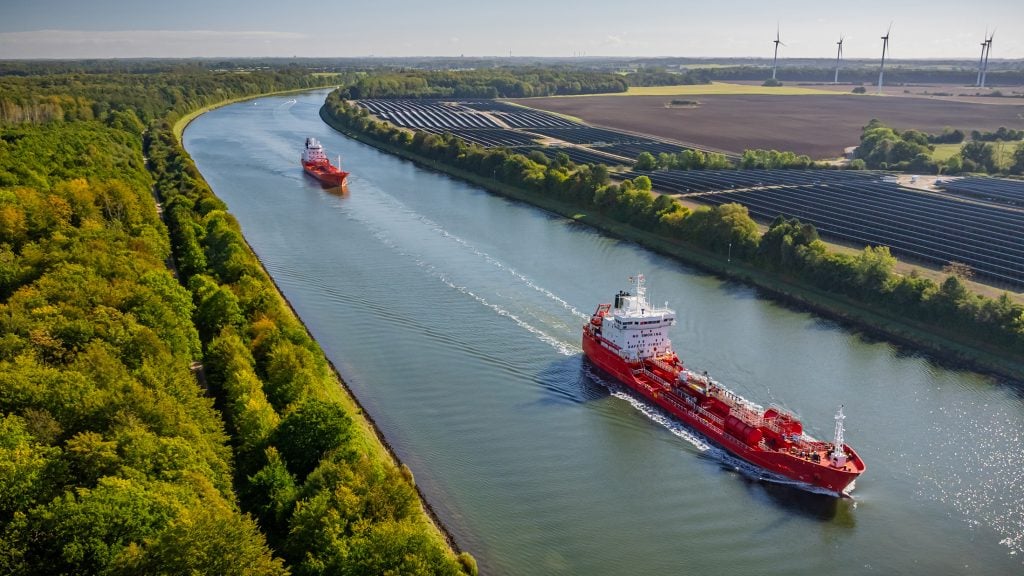Euro 2024's sustainability playbook is reshaping corporate ESG strategies

Environmental, social, and governance (ESG) strategies that deliver measurable impact without broken promises are in high demand. And business leaders across a wide variety of sectors face growing pressure from investors, regulators, customers, and even employees to integrate these standards into their daily operations.
There are not many credible and scalable ESG models to follow that also comply with stricter regulations and pass investor scrutiny. However, the Union of European Football Associations' (UEFA) Euro 2024 tournament offers an inspirational case study from top to bottom.
Organisers poured a massive €30.6 million of funding into sustainability and returned a final carbon footprint of 316,912 tonnes of CO2e, with a full commitment to transparency. In this article, we'll explore the roadmap tournament organisers generated that could help forward-thinking businesses align their ESG goals with their strategy.
Euro 2024’s ESG framework
UEFA tackled sustainability head on. It drafted a nearly 40-page ESG strategy in December 2023 that aligned with the European Union's Corporate Sustainability Reporting Directive (CSRD), as well as the Global Reporting Initiative (GRI) and the United Nation’s Sustainable Development Goals (SDGs). This roadmap spanned 11 areas of action and generated 48 targets and 83 key performance indicators (KPIs). UEFA then worked closely with the German Football Association (DFB) to ensure that their tournament goals were intentional and measurable.
A €30.6 million investment with measurable impact
The €30.6 million ESG budget ensured that the strategy covered human rights, diversity, accessibility, environmental protection, and circular economy initiatives. The plan would leverage Germany’s renewable energy grid and public transit systems, thereby prioritising execution over aspiration.
And the strategy worked well, with the tournament's final carbon footprint being 316,912 tonnes of CO2e, far lower than the projected 490,000 tonnes. UEFA also offset emissions by boosting its climate fund to €7 million. Nearly 200 German clubs received a share of the funds to help with their own projects related to renewable energy, waste management, and energy efficiency.
Here are a few of the key initiatives that drove the results:
-
100% renewable energy: The 10 host stadiums ran entirely on certified green electricity, underlining sustainability as a top procurement priority. UEFA also turned down any gas, oil, or utility sponsors, instead favouring partners such as BYD and its electric vehicle fleet.
-
Circular economy in action: UEFA recommended reusable cup schemes, the use of package-free products, composting at food kiosks, and active waste monitoring to cut down on landfill contributions. Any leftover food was donated to further enhance circularity.
-
Low carbon transport: UEFA partnered with Deutsche Bahn to provide 36-hour public transport passes. Anyone with a match ticket was eligible. Discounted Interrail tickets were also made available for visiting overseas fan. These strategies addressed the more than 75% of event emissions that inspectors often link to transportation. As a large number of fans would use these forms of low-emission transit, sustainable travel was front and centre in their plan.
-
Transparent reporting: Many companies tend to treat sustainability issues as an addendum to everyday operations, but UEFA was fully transparent. It outlined its emissions estimates, methodologies, and KPIs at the outset to make sure that they fully aligned with CSRD and GRI standards.
Corporate lessons from Euro 2024
Euro 2024 is something of an outlier in the sporting world in relation to its sustainability initiatives. However, multinationals, regional firms, and scale-ups alike can learn from its principles, collaboration, transparency, and execution. Here are four ways to apply some of those lessons in the business world:
Build ESG with stakeholders
Since UEFA collaborated with governments and local councils, they could more efficiently shape the championship’s ESG policies. This led to improvements in the fields of mobility, accessibility, and anti-discrimination. Business leaders should engage stakeholders early to co-design ESG priorities. Even smaller firms can adapt this approach by crafting low-cost partnerships with local communities or suppliers.
Be transparent
UEFA was very open and honest and implemented standards-based reporting, which increased its credibility. Adopt investor-grade disclosure with clear targets, verified data, and close alignment with regulatory frameworks.
Leverage existing infrastructure
The organiser achieved many of its ESG goals efficiently by connecting with the host country’s renewable grid and transit systems. Companies could take a similar approach by aligning ESG objectives with local or sectoral infrastructure.
Prioritise long-term legacy
UEFA supported grassroots clubs throughout the area with its climate fund and inked longer-term contracts with host cities. Leaders can embed ESG into their own operations and incentives to set five-year visions that also drive value creation.
Implementing the Euro 2024 model in business
As regulators get tougher, journalists decry greenwashing, and investors demand climate disclosures, the pressure is on. At Euro 2024, stakeholder-driven and measurable approaches created a clear path through the turmoil.
Learn from their example by:
Company executives can avoid greenwashing by clearly executing instead. They can earn credibility through verified progress and should invite stakeholder scrutiny. Publishing their own data to show performance against their baseline ESG metrics will help. Just remember: It's best to use third-party auditors and the latest technology to track any progress as per global standards.
Craft your own ESG strategy
Euro 2024 sets a high bar when it comes to operationalising sustainability with credibility. Businesses can learn a lot by studying this example and adapting their principles to meet stakeholder expectations — and still perform well.
At HLB, we're eager to assist with your sustainability plans and can help you pair compliance with growth. We'll partner with your leadership team to align ESG with your mission, manage risk along the way, and deliver measurable impacts.
Get in touch today, and we'll explore how your company can build a sustainability strategy that sets it apart from the competition.
Related content






